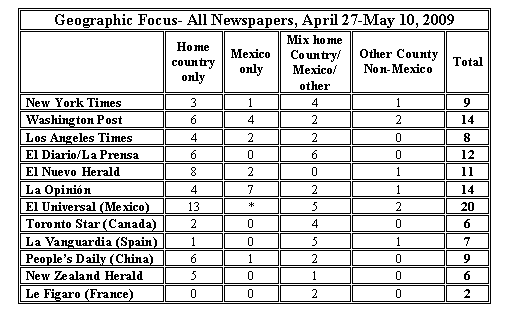In Spain, coverage of the “H1N1 virus” in the widely read daily La Vanguardia, based in Barcelona, was more closely matched to the number of reported cases than other countries PEJ studied. As of May 10, Spain confirmed 93 cases (and no deaths), for an average of one story per 13 cases (7 stories in total).
These seven stories tended to be longer and more in depth than in other papers studied. With an emphasis on actions of health organizations, an April 29 report of approximately 700 words explained in detail the WHO response, with particular attention to the organization’s retraction of travel restrictions. Another article with the headline “Vaccine Against Panic” explained in about 750 words that the European Union was emphasizing the non-deadly nature of the virus and downplaying the severity to avoid unnecessary panic.

With coverage that often spanned across countries, La Vanguardia also stood out for its focus on the geopolitical implications of the crisis.
After the virus spread to Europe, La Vanguardia criticized Russia for halting pork imports from Spain. “The wall of prohibitions Russia is constructing to protect itself from the H1N1 flu came to Spain yesterday with the announcement of the Federal Service of Veterinary and Phytosanitary Surveillance of the Russian Federation,” reported the paper. The paper also ran one article on issues of discrimination against Mexicans in other countries headlined “Mexico Reports it Suffers Global Harassment over the Flu.”
In its own reporting, the paper used only the most neutral terminology, referring to the virus as the “new flu” or just “the flu.”




